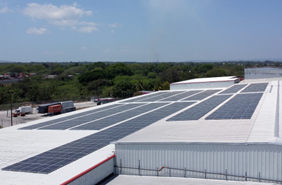Home ▸ Knowledge
The Cadmus team is driven by a common ethos of helping each of our clients advance their missions. This sense of duty comes from deep within our corporate DNA, and means that for every initiative, your objectives become our purpose. You can depend on Cadmus to be a dedicated extension of your team.




Cadmus is a premier firm supporting the water sector at every level Cadmus was formed over 40 years ago by a group of technical professionals dedicated to helping the U.S. ...


Cadmus-led program accelerated the uptake of distributed solar PV “Strengthening Energy Sector Resilience in Jamaica” (SESR-Jamaica) was a three-and-a-half-year public-private partnership project of the Cadmus-led Jamaica Energy Resilience Alliance (JERA) ...

A leader’s guide to navigating change & accelerating efficiency Leaders across government and business are facing significant disruption for their organizations and teams. These leaders are responsible for guiding their ...

Every leader is at some point called upon to manage change—that vast, complex project that could be a game-changer for the organization. Imagine for a moment it’s your turn. The ...